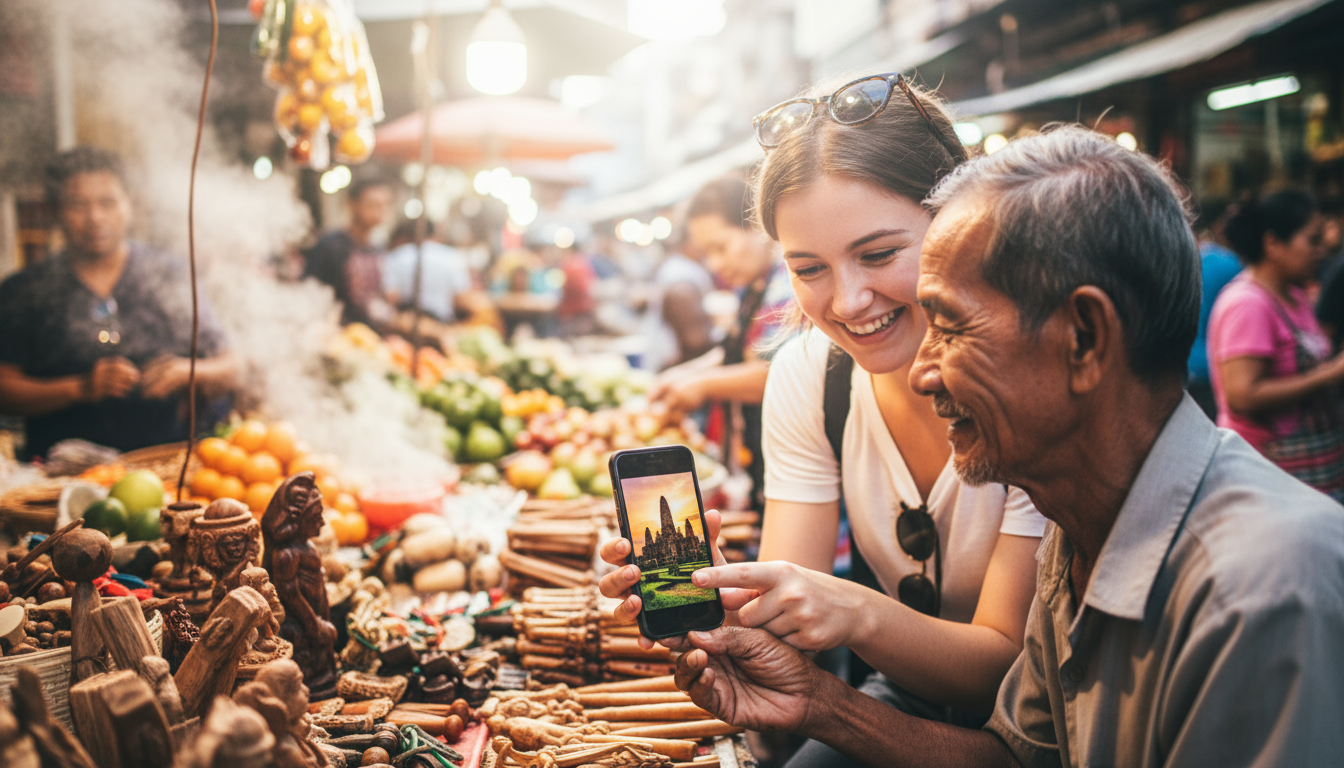In the modern travel landscape, social media platforms—from Instagram and TikTok to local forums and niche groups—have evolved beyond simple photo-sharing. They now serve as powerful tools for authentic pre-trip research, real-time connection with local communities, and for sharing experiences in a way that fosters cross-cultural understanding. Mastering the art of using social media as a cultural bridge in travel allows travelers to move beyond the tourist bubble and engage with the destinations they visit on a deeper, more meaningful level.
The ethical use of social media can transform the traveler’s role from passive observer to active participant. By leveraging these digital spaces thoughtfully, travelers can contribute positively to the preservation of local traditions, support genuine small businesses, and correct damaging stereotypes. This guide provides actionable strategies for travelers who wish to prioritize connection and respect while using social media as a cultural bridge in travel.
Phase 1: Pre-Trip Research for Deeper Immersion
Before ever stepping on a plane, social media can provide an unparalleled, unfiltered view of a destination, far surpassing outdated guidebooks.
1. Beyond the Hashtag: Niche Group Discovery
Instead of only following global travel influencers, search for hyper-local groups and community pages:
- Facebook/Local Forums: Look for groups run by local residents, such as “Expat community in [City]” or “[City] Local Foodies.” These platforms offer advice on true local spots, safety warnings, and answers to nuanced cultural questions that a standard guide cannot provide.
- Instagram Location Tags: Instead of searching for the city name, search for specific neighbourhood location tags or local business names to see un-curated, authentic daily life captured by locals.
2. Language and Phrase Acquisition
Apps and social video platforms are excellent for learning conversational phrases in a local dialect or slang not taught in formal classes. Following local comedians or content creators can teach you about cultural nuances, humor, and current events, significantly enhancing your ability to communicate when using social media as a cultural bridge in travel.
Phase 2: Real-Time Connection and Engagement
Once on the ground, social media facilitates direct, immediate interactions that break down typical tourist barriers.
3. Supporting Local and Authenticity
- Geo-tagging Wisely: When sharing experiences, intentionally tag small, locally-owned restaurants, artisans, or guesthouses rather than large chains. This direct promotion channels your audience and economic benefit straight to the community that needs it most.
- Ask for Recommendations: Use an Instagram Story or a Facebook post to ask your audience if they know any locals in the city you are visiting. A direct connection through a trusted friend often leads to the most authentic cultural exchanges—a key method for using social media as a cultural bridge in travel.
4. The Ethical Exchange of Dialogue
Platforms like Instagram and Twitter can be used to initiate dialogue with locals about history, politics, or cultural practices. Approach these interactions with genuine curiosity, not judgment. Post a photo of a local dish and ask for the story behind it, or share an observation and invite local perspectives. This respectful exchange moves beyond the superficial snapshot to create genuine cultural understanding.
Phase 3: Ethical Sharing and Responsible Storytelling
The most challenging aspect of using social media as a cultural bridge in travel is responsible content creation. The traveler must consider the potential impact of their posts on the local community.
5. Respecting Privacy and Sacred Spaces
Before taking or sharing a photograph, always ask for permission, especially when the subject is a person, a child, or an elderly artisan.
- Sensitive Locations: Refrain from geo-tagging and sharing the exact location of vulnerable natural sites, private homes, or culturally sacred places (e.g., hidden lagoons, private ceremonies). “Secret spots” shared by influencers can quickly be destroyed by over-tourism. Instead, tag the nearest major city or general region.
6. Challenging the Single Story
Be conscious of how your narrative portrays the destination. Avoid perpetuating stereotypes of poverty, exoticism, or danger. If you share a challenge (like a difficult journey), balance it with the beauty, resilience, and humanity of the people you meet. Use your platform to highlight complexity and nuance, showing that the community is more than just a backdrop for your personal adventure.
7. The Call to Action
Use your platform’s reach as a force for good. If you discover a local environmental effort, a community project, or an ethical charity, use your posts to direct donations, volunteer applications, or ethical business patronage to that cause. This transforms your travel sharing from simple self-promotion into a tool for sustainable, positive impact, making social media a true cultural bridge. By following these ethical guidelines, the traveler ensures that their digital presence supports, rather than exploits, the cultural spaces they explore.


